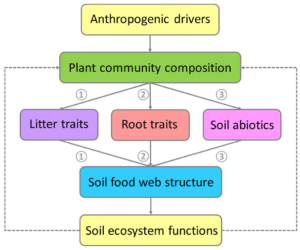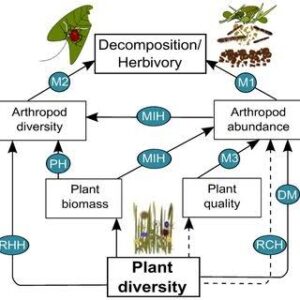Back to: Botany 500 Level
My Afrilearn botanist-in-the-making!
How you dey today? I know say your mind still dey ginger like fresh pepper soup, and your brain dey ready to collect another solid lesson. Today, we go talk about something wey be like “neighbourhood gist” for the plant world—Plant Communities. E go sweet you well, because na concept wey go open your eye to how plants dey organise themselves like one family wey dey live together.
Concepts of plant communities
So wetin be Plant Community?
Make we yarn am like this—just like you get different families wey dey live for one compound or estate, na so different plants dey live together for one environment. When different plant species dey grow in the same area and interact with one another, we dey call that gathering a plant community. E no be just random; na organised living together.

For example, if you waka enter Nigerian savanna, you go see grasses, shrubs and some scattered trees—all dem dey live together and depend on each other. That na a plant community. Same thing for rainforests in Cross River or mangrove swamps in the Niger Delta—na different plant communities based on the environment.
What makes a Plant Community unique?
Every plant community get its own structure and characteristics. These things fit include:
- Species Composition:
This mean the types of plants wey dey there. For instance, in a rainforest, you go see iroko, mahogany, and ferns. While for dry savanna, you go see baobab and grasses like spear grass. - Dominance:
Sometimes, one plant species go full everywhere pass others. That plant go be the dominant one. Like for a maize farm, maize na the main guy, other plants (like weed) just dey follow back. - Stratification:
Just like buildings get floors, plant communities too dey arranged in layers. For forest, you fit get tall trees at the top (canopy), then shorter trees (understorey), then small shrubs and grasses below. This arrangement help them share sunlight and resources without much wahala. - Succession:
This one na how plant communities change over time. If you clear bush today, after some time, grasses go grow. Later shrubs, then trees. This gradual change na ecological succession and e dey form new plant communities with time.
Examples wey you fit relate with for Naija:
- Rainforest Community: Like the one for Ondo State—full of tall trees, thick canopy, and shade-loving plants.
- Savanna Community: Like Kainji area—grasses, scattered trees, fire-resistant plants.
- Mangrove Community: Like the coastal areas of Bayelsa—red mangrove with roots wey enter water, salt-tolerant species.
- Farmland Community: Like cassava farm mixed with maize and groundnut.

Why E Matter?
Understanding plant communities help us manage land well, protect endangered species, and plan agriculture better. For example, knowing which plants survive together help farmers practice good intercropping.
Summary:
- A plant community is a group of different plant species living and interacting in the same environment.
- Key features include species composition, dominance, stratification, and succession.
- Nigerian examples include rainforest, savanna, mangrove and farmland communities.
Evaluation:
- What is a plant community in simple terms?
- Mention two characteristics of a plant community.
- Give one example of a plant community found in Nigeria.
You too sabi, I no go lie! Your brain dey process this Botany like champion, and I dey proud of your sharp focus. Remember, learning about plant communities na one step closer to becoming a true nature expert. With Afrilearn by your side, no limit dey your shine! Till next time, keep your head high and your curiosity alive—you dey do well, my correct person!
